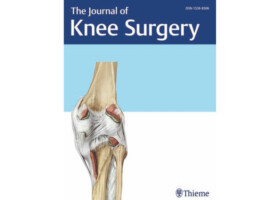
Authors:
Neal C Chen, Robert E Boykin, Peter J Millett
Abstract:
Anterior cruciate ligament (ACL) reconstruction with hamstring autograft has become a popular method of treating ACL deficiency. Improved femoral fixation techniques have resulted in better outcomes and increased popularity of this graft. Beginning in the early 1990s, Clark Howell and Gottlieb, and Wolf independently developed femoral cross pin fixation techniques for hamstring ACL reconstruction, which have since become popular alternatives to interference screw and endo button fixation techniques.
Few complications of cross pin fixation have been reported. Klein reported a series of 57 patients treated with metal cross pin fixation with evidence of tunnel widening. Bottoni reported a case of proximal migration of tibial interference screw into the knee in a hamstring reconstruction using a femoral cross pin. Cross pin breakage using the DePuy Mitek RIGIDFIX (DePuy Mitek Inc, Norwood, Mass) has recently been reported.This article presents a corroborative case in which a bioabsorbable femoral cross pin fractured or degraded and presented as an articular loose body 2 years after the index surgery.
For the complete study: Broken Femoral Cross Pin After Hamstring Anterior Cruciate Ligament Reconstruction
